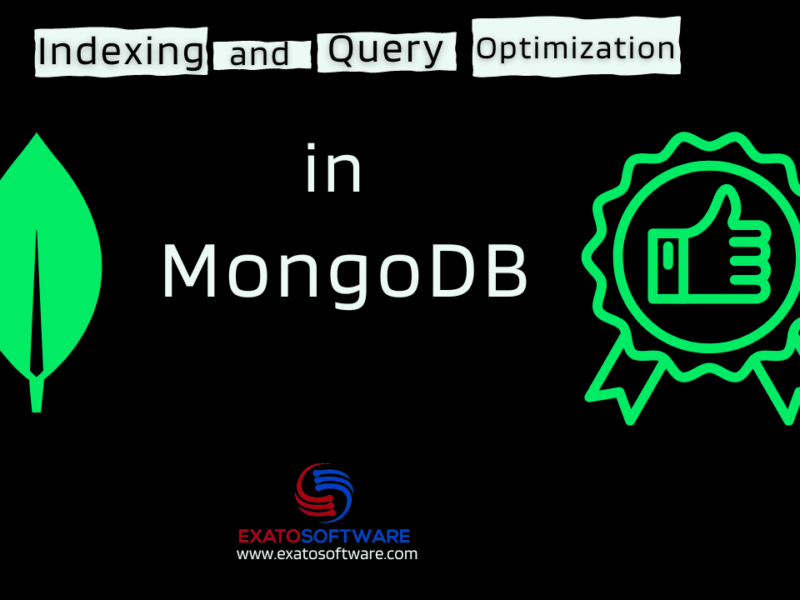In MongoDB, a schema refers to the organization or structure of documents within a collection. Unlike traditional relational databases, MongoDB is a NoSQL database that stores data in a flexible, schema-less format called BSON (Binary JSON). MongoDB collections do not enforce a rigid, predefined schema, allowing documents within the same collection to have different fields.
Key points about schemas in MongoDB
- Dynamic Schema:
MongoDB allows for dynamic schema design, meaning that documents in the same collection can have different fields and data types.
You can add or remove fields from documents without affecting other documents in the same collection. - BSON Documents:
Data is stored in BSON (Binary JSON) format, which is a binary representation of JSON-like documents.
BSON supports various data types, including strings, numbers, arrays, and embedded documents. - Flexibility:
The flexibility of MongoDB’s schema is particularly useful during the development phase when requirements may change frequently.
It allows developers to adapt to evolving application needs without significant changes to the database schema. - Scalability:
MongoDB’s flexible schema design is conducive to horizontal scaling, where you can distribute data across multiple nodes and servers.
Adding new fields or indexes to a collection does not require downtime or schema modification, making it easier to scale. - Complex Data Structures:
MongoDB can handle complex data structures, such as nested arrays and documents, making it suitable for a wide range of applications. - Agile Development:
MongoDB’s schema-less nature is beneficial in agile development environments, where requirements may change frequently, and the database needs to accommodate those changes easily. - Indexes:
While MongoDB allows for flexible schemas, it is still important to consider indexing based on the types of queries your application will perform. Indexes help improve query performance.
MongoDB’s use of a flexible and dynamic schema allows developers to work with evolving data models, providing agility and scalability. This approach is particularly well-suited for applications where the data structure is not known in advance or may change frequently during development.
Make the most of document-oriented architecture of MongoDB
Designing schemas in MongoDB involves understanding the nature of document-oriented databases and leveraging the flexibility they offer. Here are some tips and examples to design MongoDB schemas effectively:
- Understand Your Data:
Before designing a schema, thoroughly understand your application’s data requirements. Identify the entities, their relationships, and the types of queries your application will perform. - Denormalization for Performance:
MongoDB favors denormalization to improve query performance. Embedding related data within a single document can eliminate the need for complex joins.
Example: Consider a blog application where you have both users and blog posts. Instead of storing user information in a separate collection and performing joins, you can embed user data within each blog post document.json { "_id": ObjectId("..."), "title": "Sample Blog Post", "content": "This is the content of the blog post.", "author": { "name": "John Doe", "email": "john@example.com" }, "tags": ["mongodb", "nosql", "blog"] } - Avoid Joins by Embedding:
Minimize the need for joins by embedding related data within documents, especially if the related data is not frequently updated.
Example: Embed comments directly within a blog post document.json { "_id": ObjectId("..."), "title": "Sample Blog Post", "content": "This is the content of the blog post.", "author": "John Doe", "comments": [ { "author": "Alice", "text": "Great post!" }, { "author": "Bob", "text": "I have a question." } ] } - Use References for Large Data:
When dealing with large datasets or frequently updated related data, consider using references. Store references to related documents and perform additional queries if needed.
Example: Store references to user documents in a blog post for scenarios where user data might change frequently.json { "_id": ObjectId("..."), "title": "Sample Blog Post", "content": "This is the content of the blog post.", "author": ObjectId("user123"), "tags": ["mongodb", "nosql", "blog"] } - Optimize for Read or Write Operations:
Optimize your schema based on the type of operations your application performs more frequently. Some schemas may be optimized for read-heavy workloads, while others may prioritize write operations. - Indexing:
Identify fields that will be used frequently in queries and create indexes on those fields to improve query performance.
Example: Create an index on the “author” field in a blog post collection if queries frequently involve filtering by author.javascript db.blogPosts.createIndex({ "author": 1 }); - Atomic Operations:
MongoDB provides atomic operations on a single document. Design your schema to minimize the need for multi-document transactions, which can impact performance.
Example: If you need to update multiple fields within a document atomically, use the$setoperator.javascript db.collection.update( { "_id": ObjectId("...") }, { "$set": { "field1": value1, "field2": value2 } } ); - Schema Validation:
Utilize MongoDB’s schema validation to enforce data integrity and consistency within documents.
Example: Define a schema for a user document with validation rules.javascript db.createCollection("users", { validator: { $jsonSchema: { bsonType: "object", required: ["username", "email"], properties: { username: { bsonType: "string", description: "Username must be a string." }, email: { bsonType: "string", pattern: "^.+@.+$", description: "Email must be a valid email address." } } } } });
By carefully considering these principles and examples, you can design MongoDB schemas that align well with the document-oriented architecture, optimizing for performance, flexibility, and scalability in your specific application context.



